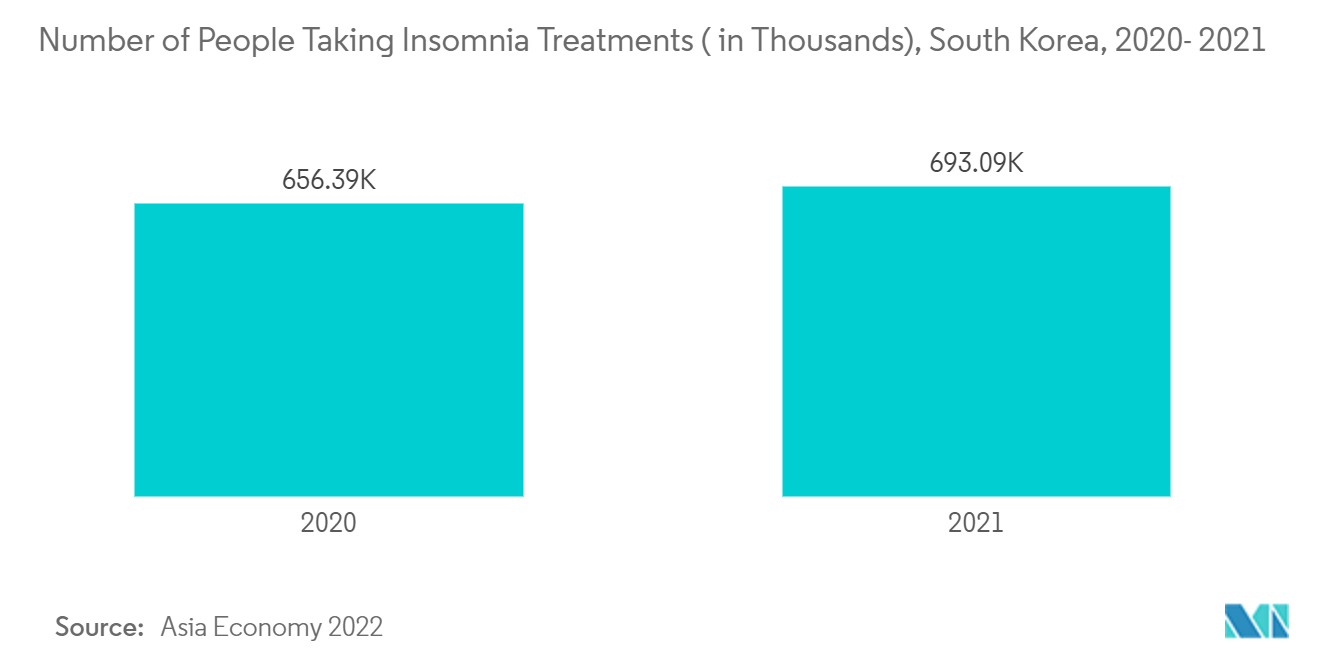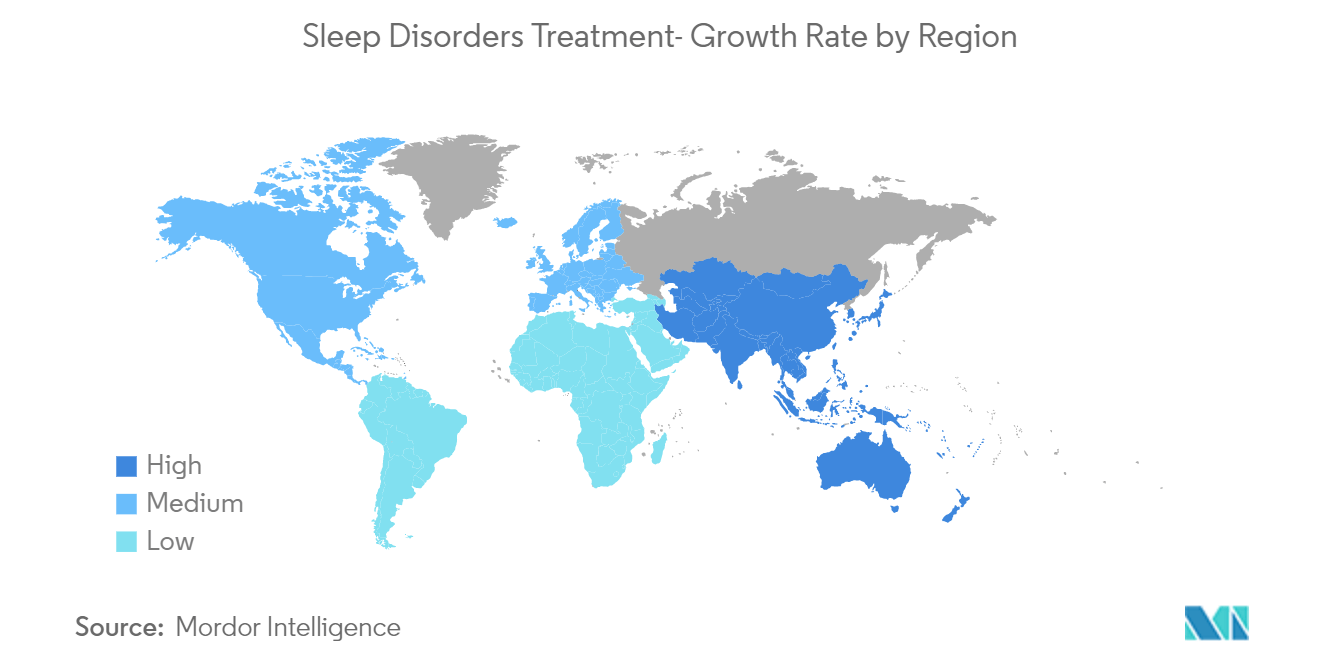Market Trends of Sleep Disorders Treatment Industry
This section covers the major market trends shaping the Sleep Disorders Treatment Market according to our research experts:
Insomnia Holds Notable Share in the Market and is Expected to Continue to Do the Same During the Forecast Period
Insomnia is expected to dominate the sleep disorders treatment market through the forecast period, attributed to the rising prevalence of insomnia, which causes severe, irresistible daytime sleepiness and sudden loss of muscle tone. In 2021, the NIH estimated that roughly 30% of the general population complains of sleep disruption, and approximately 10% have associated symptoms of daytime functional impairment consistent with the diagnosis of insomnia. The NCBI article published in 2021 also mentioned that insomnia afflictions were a chronic pattern among more than 10% of the European population.
The increasing drug approvals for insomnia are also expected to contribute to the growth of the studied segment. For instance, in June 2022, Daridorexant, a drug used to treat insomnia, was approved in Europe for the improvement of sleep-related disorders and conditions. In July 2021, Esai Co. Ltd launched the in-house discovered and developed orexin receptor antagonist DAYVIGO for treating adults with insomnia, characterized by difficulties with sleep onset.
Increasing awareness campaigns about the disease and the available treatment options leading to early diagnosis and increasing healthcare expenditure are anticipated to drive this segment's growth over the forecast period. For instance, in January 2022, the National Sleep Foundation launched Sleep Awareness Week to reemphasize the important connection between sleep and health.
Thus, such factors are expected to drive the growth of the segment over the forecast period.

North America is Expected to Hold Significant Share in the Market During the Forecast Period
North America is expected to dominate the market for sleep disorders, and it is expected to continue its stronghold for a few more years. The increasing prevalence of sleep disorders, rising awareness, growing demand for sleep disorder treatment in the United States and Canada, and high healthcare spending are anticipated to drive the market. In addition, favorable reimbursement policies for therapeutic products, a strong clinical pipeline, and rising stress levels are other factors anticipated to promote revenue growth. According to the American Psychological Association (APA) survey of 2020, adults rated their stress levels as 5.0 on a scale of 1 to 10 in 2020. Stress levels among Gen Z adults slightly rose in the last two years, increasing to 6.1 in 2020.
According to the American Academy of Sleep Medicine (AASM) 2020, stress can cause adjustment insomnia, which affects up to 20% of the US population each year. Children with poor sleeping habits are more likely to develop behavioral insomnia, which affects 30% of children. The same source stated that, in 2021, nearly 51% of Americans reported using sleep aids during the COVID-19 pandemic. Such increasing awareness of sleep medication in the United States is expected to drive the growth of the market during the forecast period.
Thus, such factors are expected to drive the growth of the market in the region during the forecast period.


